Huge black holes are firing powerful beams of particles into space — and then changing their aim to fire at new targets. This discovery, made using NASA’s Chandra X-ray Observatory and the U.S. National Science Foundation (NSF) National Radio Astronomy Observatory’s (NRAO) Very Long Baseline Array (VLBA), shows what kind of widespread impact black holes can have on their surrounding galaxy and beyond.
A team of astronomers looked at 16 supermassive black holes in galaxies surrounded by hot gas detected in X-rays by Chandra. Using radio data from the VLBA, operated by the National Radio Astronomy Observatory, they studied the directions of beams — also known as jets — of particles fired a few light-years away from the black holes. This gives the scientists a picture of where each beam is currently pointed, as seen from Earth. Each black hole fires two beams in opposite directions.
The team then used Chandra data to study pairs of cavities, or bubbles, in the hot gas that were created in the past by the beams pushing gas outwards. The locations of large outer cavities indicate the direction those beams pointed millions of years earlier. The researchers then compared the directions of the radio beams with the directions of the pairs of cavities. Read the full release HERE.
The post Spotted: ‘Death Star’ Black Holes in Action appeared first on National Radio Astronomy Observatory.




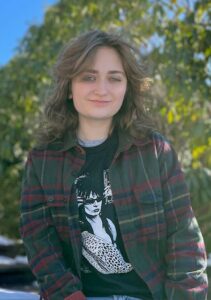 Grace Dillon is a senior at Western Albemarle High School and a member of the National Art Honor Society. Her journey into the arts began the moment she gripped a triangular crayon in her hand, and it hasn’t stopped since.
Grace Dillon is a senior at Western Albemarle High School and a member of the National Art Honor Society. Her journey into the arts began the moment she gripped a triangular crayon in her hand, and it hasn’t stopped since. Amaya Estrada is a senior at New Mexico Destinations Career Academy an online school through Gallup, New Mexico. Amaya has held a cumulative GPA of 3.45 and is ranked 12 out of 180. Through her online school, she has taken many medical-related classes in which she has earned certificates in medical terminology, health science fundamentals, allied health, and medical office procedures and admin. She will also graduate with a Nursing Assistant Certificate. Taking these classes has solidified and given her the push she needed to make her decision to attend UNM to major in nursing. Her long-term goal is to be a traveling RN who specializes in pediatric nursing or neonatal nursing working in the NICU.
Amaya Estrada is a senior at New Mexico Destinations Career Academy an online school through Gallup, New Mexico. Amaya has held a cumulative GPA of 3.45 and is ranked 12 out of 180. Through her online school, she has taken many medical-related classes in which she has earned certificates in medical terminology, health science fundamentals, allied health, and medical office procedures and admin. She will also graduate with a Nursing Assistant Certificate. Taking these classes has solidified and given her the push she needed to make her decision to attend UNM to major in nursing. Her long-term goal is to be a traveling RN who specializes in pediatric nursing or neonatal nursing working in the NICU.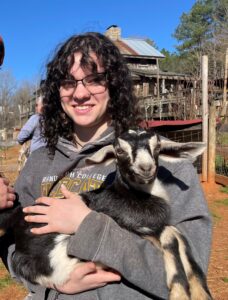 Ellee Fitzgerald is a homeschooled senior completing dual enrollment courses at Piedmont Virginia Community College (PVCC) in Charlottesville, Virginia. After graduation, she plans to continue her studies at PVCC to complete an Associate of Science Degree in Engineering with intentions to finish her bachelor’s degree at Virginia Tech. Ellee’s interest in engineering is the culmination of years of curiosity about how things work and the satisfaction gained from building things that suit practical purposes. She can often be found in the workshop soaking up knowledge and honing new skills. While she is undecided about what industry she’d ultimately like to work in after college, she has an early interest in automotive and aeronautical engineering.
Ellee Fitzgerald is a homeschooled senior completing dual enrollment courses at Piedmont Virginia Community College (PVCC) in Charlottesville, Virginia. After graduation, she plans to continue her studies at PVCC to complete an Associate of Science Degree in Engineering with intentions to finish her bachelor’s degree at Virginia Tech. Ellee’s interest in engineering is the culmination of years of curiosity about how things work and the satisfaction gained from building things that suit practical purposes. She can often be found in the workshop soaking up knowledge and honing new skills. While she is undecided about what industry she’d ultimately like to work in after college, she has an early interest in automotive and aeronautical engineering.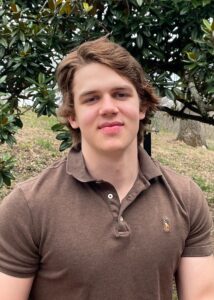 Michael Hanrahan is a senior at Albemarle High School in Charlottesville, Virginia. He has a strong academic record with a 4.33 GPA. He balances academics with a passion for extracurricular activities. Michael has played soccer at an elite level, traveling to national competitions in Florida and California, and maintains a daily fitness routine through strength training. In addition to athletics, he’s actively involved in his school community, serving as a peer tutor in rigorous subjects like calculus, AP physics, and AP literature. In this role, Michael acts as a mentor and friend, supporting younger students through the challenges of high school. He plans to continue his academic journey this fall at Virginia Tech.
Michael Hanrahan is a senior at Albemarle High School in Charlottesville, Virginia. He has a strong academic record with a 4.33 GPA. He balances academics with a passion for extracurricular activities. Michael has played soccer at an elite level, traveling to national competitions in Florida and California, and maintains a daily fitness routine through strength training. In addition to athletics, he’s actively involved in his school community, serving as a peer tutor in rigorous subjects like calculus, AP physics, and AP literature. In this role, Michael acts as a mentor and friend, supporting younger students through the challenges of high school. He plans to continue his academic journey this fall at Virginia Tech.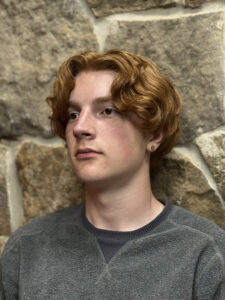 Gabriel Indebetouw is a senior at Monticello High School in Charlottesville, Virginia. He also studies at the county’s Center 1 for media communications and digital innovation. He has a 4.3 GPA, balancing numerous AP and dual-enrollment courses with his creative side as a photographer. He has been using his height to his advantage as a goalkeeper with the Monticello soccer team.
Gabriel Indebetouw is a senior at Monticello High School in Charlottesville, Virginia. He also studies at the county’s Center 1 for media communications and digital innovation. He has a 4.3 GPA, balancing numerous AP and dual-enrollment courses with his creative side as a photographer. He has been using his height to his advantage as a goalkeeper with the Monticello soccer team.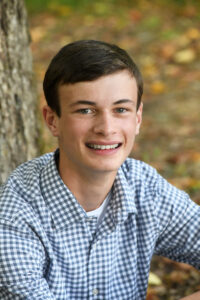 Andrew Jennings is a senior at Albemarle High School in Charlottesville, Virginia, where he holds a 4.0 GPA. He has taken coursework as part of the county’s Math, Engineering, and Science Academy, and will attend college at Virginia Tech in the fall to study engineering with an emphasis in computer engineering. Andrew serves as the treasurer of the National Honor Society and is also a member of the math and music honor societies.
Andrew Jennings is a senior at Albemarle High School in Charlottesville, Virginia, where he holds a 4.0 GPA. He has taken coursework as part of the county’s Math, Engineering, and Science Academy, and will attend college at Virginia Tech in the fall to study engineering with an emphasis in computer engineering. Andrew serves as the treasurer of the National Honor Society and is also a member of the math and music honor societies.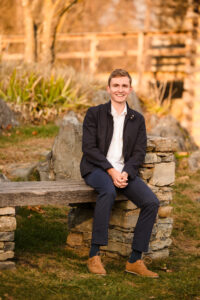 Kai Lehmensiek is a senior at Western Albemarle High School in Crozet, Virginia. He was born and raised close to Cape Town, South Africa, before relocating to Charlottesville in August 2022. Kai is an avid runner who has served as a cross-country and track team captain and as a member of two 4x800m all-state teams. In the 2024 indoor track season, he became the district champion and an all-state athlete in the 1000m, helping his team to their ultimate victory at the state meet. When not running, Kai enjoys playing the piano, having had lessons for about 12 years. In South Africa, he participated in the Stellenbosch Eisteddfod, a prestigious local competition, where he won the J. S. Bach category and was named best jazz pianist for his performance of Gershwin’s three preludes for piano. In Charlottesville, he participated in the CMTA Music Festival, where he was awarded a double superior both times he performed. Having strived to do well in challenging courses, Kai has also taken the Cambridge IGCSE and AS level examinations in Mathematics as extracurricular activities and was awarded a distinction in each.
Kai Lehmensiek is a senior at Western Albemarle High School in Crozet, Virginia. He was born and raised close to Cape Town, South Africa, before relocating to Charlottesville in August 2022. Kai is an avid runner who has served as a cross-country and track team captain and as a member of two 4x800m all-state teams. In the 2024 indoor track season, he became the district champion and an all-state athlete in the 1000m, helping his team to their ultimate victory at the state meet. When not running, Kai enjoys playing the piano, having had lessons for about 12 years. In South Africa, he participated in the Stellenbosch Eisteddfod, a prestigious local competition, where he won the J. S. Bach category and was named best jazz pianist for his performance of Gershwin’s three preludes for piano. In Charlottesville, he participated in the CMTA Music Festival, where he was awarded a double superior both times he performed. Having strived to do well in challenging courses, Kai has also taken the Cambridge IGCSE and AS level examinations in Mathematics as extracurricular activities and was awarded a distinction in each. Dolly Parton’s quote, “If I can hold God’s attention, I can hold the worlds,” deeply resonates with me. It embodies courage and faith, qualities I strive to embody alongside being outgoing, setting high standards, and sharing charisma. I see myself as a leader who finds joy in bringing fun to situations, though my stubbornness can sometimes be a double-edged sword.
Dolly Parton’s quote, “If I can hold God’s attention, I can hold the worlds,” deeply resonates with me. It embodies courage and faith, qualities I strive to embody alongside being outgoing, setting high standards, and sharing charisma. I see myself as a leader who finds joy in bringing fun to situations, though my stubbornness can sometimes be a double-edged sword.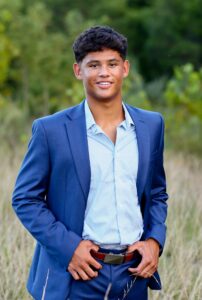 Tyler Manglicmot is a senior at Fork Union Military Academy in Fork Union, Virginia. He is president of FUMA’s chapter of the National Honor Society with a 4.6 GPA. He is a three-season varsity athlete on the FUMA football, basketball, and baseball teams. Tyler will be attending the University of Virginia next year and plans on majoring in mechanical engineering.
Tyler Manglicmot is a senior at Fork Union Military Academy in Fork Union, Virginia. He is president of FUMA’s chapter of the National Honor Society with a 4.6 GPA. He is a three-season varsity athlete on the FUMA football, basketball, and baseball teams. Tyler will be attending the University of Virginia next year and plans on majoring in mechanical engineering.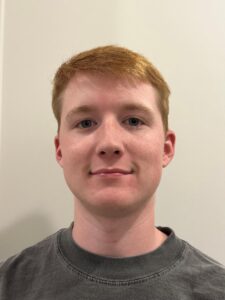 Lochren Miller is a senior at Horizon West High School in Winter Garden, Florida. Lochren ran the 800- meter for his high school track team, is an avid weightlifter, and started a Bible study during his lunch period. During his junior and senior years, he worked part time at Salt and Straw at Disney Springs in the Walt Disney World Resort. In addition to this, Lochren participated in the Dual Enrollment program, earning 60 college credit hours. He will graduate with his high school diploma and with an Associate in Arts degree from Valencia College in Orlando, Florida.
Lochren Miller is a senior at Horizon West High School in Winter Garden, Florida. Lochren ran the 800- meter for his high school track team, is an avid weightlifter, and started a Bible study during his lunch period. During his junior and senior years, he worked part time at Salt and Straw at Disney Springs in the Walt Disney World Resort. In addition to this, Lochren participated in the Dual Enrollment program, earning 60 college credit hours. He will graduate with his high school diploma and with an Associate in Arts degree from Valencia College in Orlando, Florida.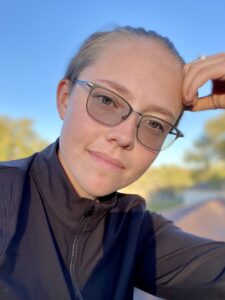 Elizabeth “Lyzz” Moellenbrock was born in Socorro and will graduate from Socorro High School this spring. In middle and high school, Lyzz has enjoyed participating in FTC Robotics, Science Fairs, and Science Olympiad. A major highlight was when she won first place in the astronomy event at the 2023 New Mexico State Science Olympiad competition.
Elizabeth “Lyzz” Moellenbrock was born in Socorro and will graduate from Socorro High School this spring. In middle and high school, Lyzz has enjoyed participating in FTC Robotics, Science Fairs, and Science Olympiad. A major highlight was when she won first place in the astronomy event at the 2023 New Mexico State Science Olympiad competition. Victoria “Jeanette” Otero is a senior at Socorro High School, where she participates in many extracurricular activities while successfully completing course work. Jeanette’s sports activities include volleyball, track, softball, and wrestling. Her performing arts include singing at public events, dance, and theatre. During her time at Sarracino Middle School, she decided that she wants to graduate early so that she could get a head start on her career. Since then, she has been hard at work, earning enough high school credits by her junior year to graduate a year early.
Victoria “Jeanette” Otero is a senior at Socorro High School, where she participates in many extracurricular activities while successfully completing course work. Jeanette’s sports activities include volleyball, track, softball, and wrestling. Her performing arts include singing at public events, dance, and theatre. During her time at Sarracino Middle School, she decided that she wants to graduate early so that she could get a head start on her career. Since then, she has been hard at work, earning enough high school credits by her junior year to graduate a year early.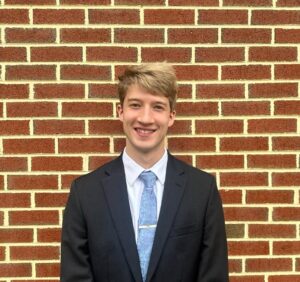 Derek Pixton is a senior at Albemarle High School in Charlottesville, Virginia and is expecting to graduate with a weighted GPA of 4.38 in June of 2024.
Derek Pixton is a senior at Albemarle High School in Charlottesville, Virginia and is expecting to graduate with a weighted GPA of 4.38 in June of 2024.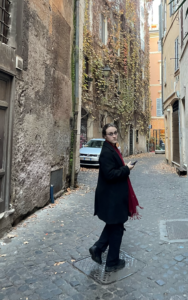 Alexandra “Lynn” Planck was born in Socorro, New Mexico, and is a senior at Socorro High School. She plans to go to New Mexico Tech and has already been accepted. Lynn wants to be an architect, but first, she’s going to be a civil engineer (because there’s no point in making pretty buildings if they fall down on top of you!). Her hobbies include acting, writing, reading and art.
Alexandra “Lynn” Planck was born in Socorro, New Mexico, and is a senior at Socorro High School. She plans to go to New Mexico Tech and has already been accepted. Lynn wants to be an architect, but first, she’s going to be a civil engineer (because there’s no point in making pretty buildings if they fall down on top of you!). Her hobbies include acting, writing, reading and art.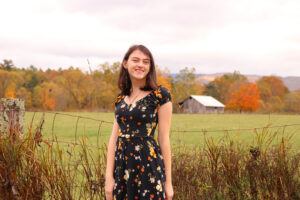 Madeline Ray is a senior at Pocahontas County High School in Dunmore, West Virginia, where she is a dedicated art student, the president of the Spanish Club, a member of the Tourism Club, and maintains a 3.9 GPA. Madeline is a member of the Spanish National Honor Society and intends to continue learning the Spanish language as she attends college. Madeline attended the Governor’s STEM Institute in 2021. Madeline was a member of the track team all four years of high school, where she competitively threw discus. She enjoys creating art, listening to music, caring for animals, and spending time in nature. She is a popular weekend cook at The Bear’s Den LLC and has worked there for two years. Madeline plans to attend West Liberty University and pursue a Bachelor of Science degree in zoo science.
Madeline Ray is a senior at Pocahontas County High School in Dunmore, West Virginia, where she is a dedicated art student, the president of the Spanish Club, a member of the Tourism Club, and maintains a 3.9 GPA. Madeline is a member of the Spanish National Honor Society and intends to continue learning the Spanish language as she attends college. Madeline attended the Governor’s STEM Institute in 2021. Madeline was a member of the track team all four years of high school, where she competitively threw discus. She enjoys creating art, listening to music, caring for animals, and spending time in nature. She is a popular weekend cook at The Bear’s Den LLC and has worked there for two years. Madeline plans to attend West Liberty University and pursue a Bachelor of Science degree in zoo science. Hannah Shannon is a senior at Western Albemarle High School and holds a GPA of 4.34. Throughout all her years in high school, Hannah has been member of the Environmental Studies Academy and has strived to be an advocate for environmental sustainability. The summer before and throughout her sophomore year, Hannah was an active member of the James River Leadership Academy. Through this program, she worked to better the health of the Chesapeake Watershed and the ecosystems in her community. She has also supplemented her education with courses through PVCC and environmental volunteer work. Hannah’s passions lie in the realms of art, literature, and nature. To further nurture these passions, she plans to attend Virginia Polytechnic Institute for an English degree.
Hannah Shannon is a senior at Western Albemarle High School and holds a GPA of 4.34. Throughout all her years in high school, Hannah has been member of the Environmental Studies Academy and has strived to be an advocate for environmental sustainability. The summer before and throughout her sophomore year, Hannah was an active member of the James River Leadership Academy. Through this program, she worked to better the health of the Chesapeake Watershed and the ecosystems in her community. She has also supplemented her education with courses through PVCC and environmental volunteer work. Hannah’s passions lie in the realms of art, literature, and nature. To further nurture these passions, she plans to attend Virginia Polytechnic Institute for an English degree. Helena Tremblay is a senior at Eldorado High School in Albuquerque, New Mexico. Helena has been playing tennis since she was five and has recently picked up teaching it to the general public. She has been working for the City of Albuquerque at a tennis center for a little over two years. Through this, she discovered a passion for helping other people succeed at their goals. She plans to pursue psychology at the University of New Mexico and hopes to use the new skills she learns to help people at a grander scale.
Helena Tremblay is a senior at Eldorado High School in Albuquerque, New Mexico. Helena has been playing tennis since she was five and has recently picked up teaching it to the general public. She has been working for the City of Albuquerque at a tennis center for a little over two years. Through this, she discovered a passion for helping other people succeed at their goals. She plans to pursue psychology at the University of New Mexico and hopes to use the new skills she learns to help people at a grander scale.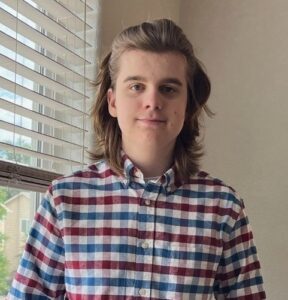 Michael Tucker recently received his GED. He is now looking to start college, with a focus in accounting. Deciding to get his GED instead of finishing high school was a hard decision, but with the health conditions he has been struggling with, he is confident it was the right one to make. He enjoys chess, reading, and content creation in his spare time. He is excited to start college and begin his path to becoming an accountant!
Michael Tucker recently received his GED. He is now looking to start college, with a focus in accounting. Deciding to get his GED instead of finishing high school was a hard decision, but with the health conditions he has been struggling with, he is confident it was the right one to make. He enjoys chess, reading, and content creation in his spare time. He is excited to start college and begin his path to becoming an accountant!






